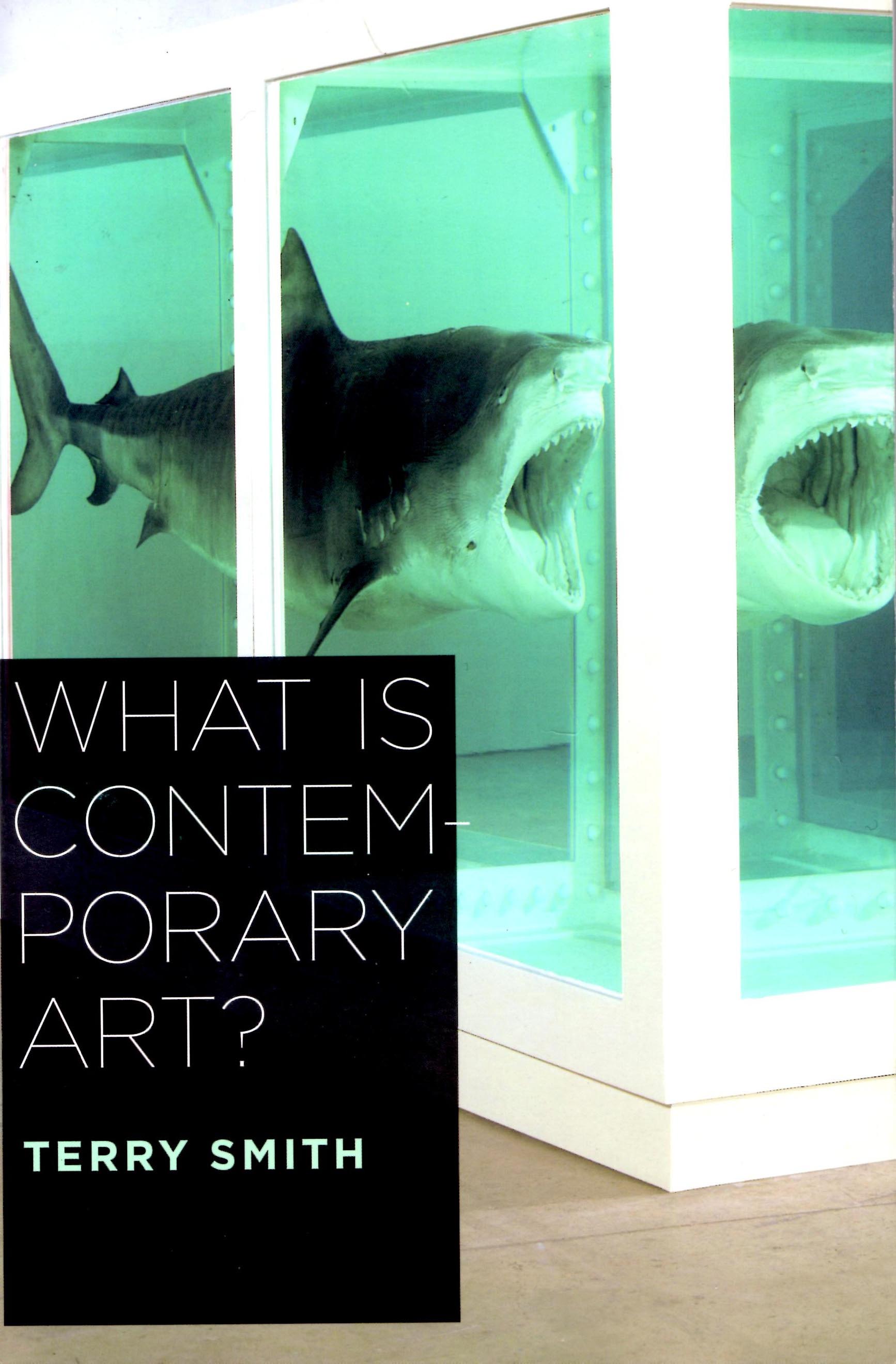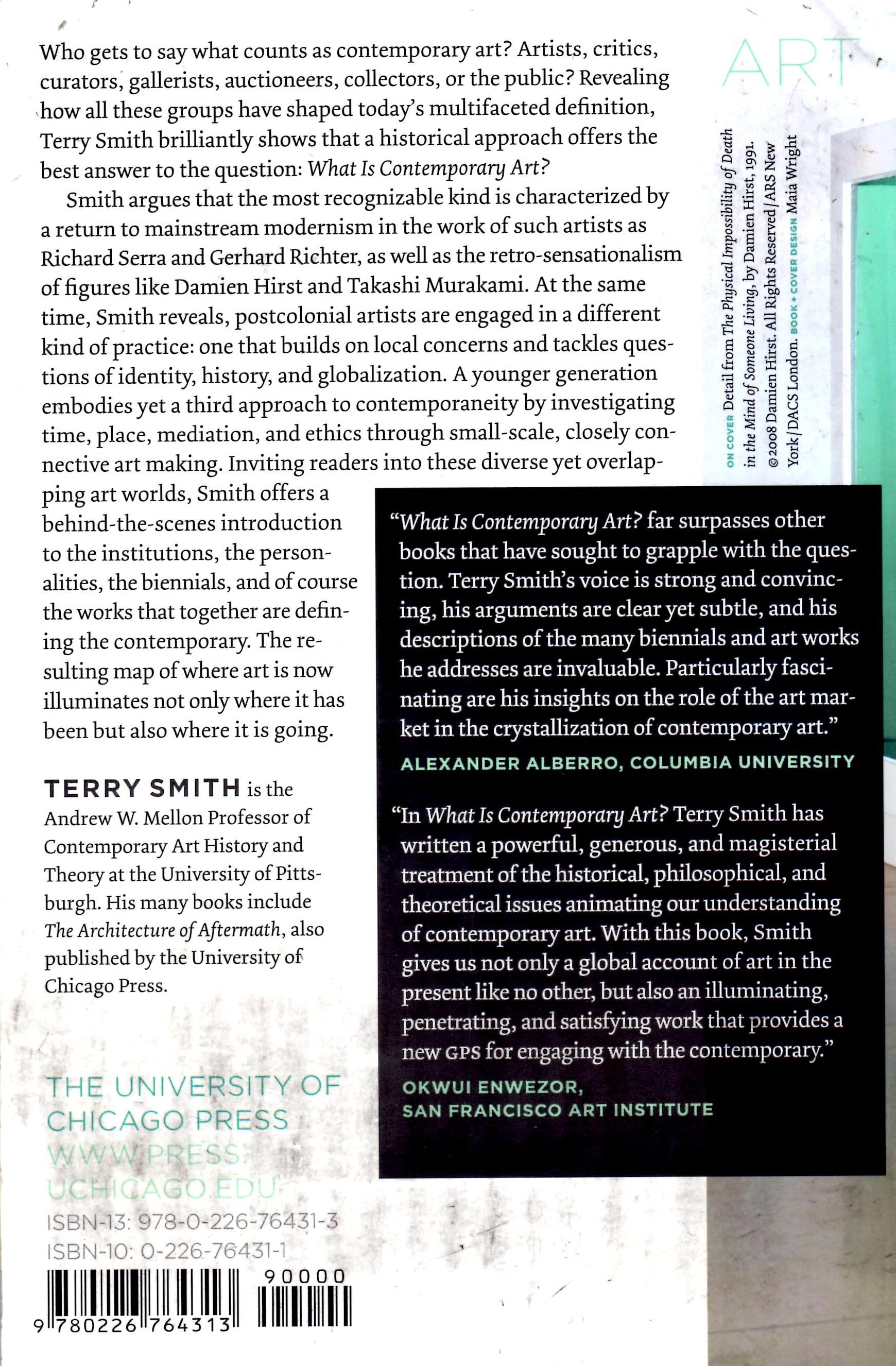Terry Smith
October 2009
From: Smith, Terry. “What is Contemporary Art?” Part IV Countercurrents: South / North, chapter 9 The Postcolonial Turn,” Ed. University of Chicago. Chicago, United States (illust.)
pp. 163 – 165.
ISBN: 9780226764313
What is Contemporary Art?
by Terry Smith
Tania Bruguera is probably the best know of the current generation of Cuban contemporary artist. At the previous biennale she drew extraordinary international attention with her installation in one of the cell-like rooms at the fort, Untitled (2000). It featured live actors, naked on rank, and rotten bagazo (sugar cane husk), frozen in corpse-like attitudes or moving among the spectators. Colonial Cuba’s enslavement to the sugar industry was vividly imagined. The inference that revolutionary Cuba was inclined to incarcerate its citizens -to reduce them to silence- was not too difficult to draw.
In the courtyard of her own house, Bruguera remade a set of works by a Cuban artist well know in the West, although not as Cuban, the ill-fated Ana Mendieta. In 2003, Bruguera was not include in the official list of invited artists, but a single work, Autobiografia, was the main one to be shown in the temporary exhibition space of the Museo Nacional devoted to Cuban art.
This was a bold and brave gesture by all concerned. The large space was void of all but two speakers at either end, and a platform at its center, on which a microphone stood, framed on three sides by a curving wall. All this was made with the rawest of materials: cardboard, packing cases, palette planks, and the like. Sound was vividly present, as surging slogans, the calls to arms of the Cuban Revolution, above all such oft-repeated phrases as “Libertad o Muerte!” “Hasta la Victoria Siempre!,” and “Viva Fidel!” Most of the time, however, these were scarcely distinguishable. But careful listening – especially if you stepped up to the microphone – disclosed their rhythmic power, their relentless presence, their selection of willing subjects, their shaping of crowds, their womb-like comfort, their obliterative omniscience, and their falling short -a landscape of memory of what it must have felt like, within the body, in the mind’s ear, to grow up during the revolution. Visitors were invited to record their own slogans, statements, or speech of any kind, which were then added to the mix. The implication here is that the voices of the people might eventually drown out those of the ones who claim to speak for them. Or perhaps not…
Autobiografia echoed, and in a sense completed, an earlier work of art, a painting by Antonia Eiríz exhibited in the historical survey of Cuban art at the Museo Nacional. in 1969 Eiríz made Una tribuna para la paz democrática, a large vertical painting that locates the spectator as the speaker about to step up to the microphones on the speaker’s stan at La Plaza de la Revolución. The stand is black, the barricades around the square are red, as are the waving flags, – actual flags, pasted into the painting. But the crowd is an undulating mass of surging gray and white marks, shapeless, ominously empty – waiting to be formed, or forever formless? In a similar way, Bruguera puts us, alone yet in public, alone yet with countless others, into that same space. With the difference that, in her installation, the barricades are down. Formlessness is all around. But the state, we plainly hear, can take form at any time. Which form it takes depends, partly (but which part?) on us.

